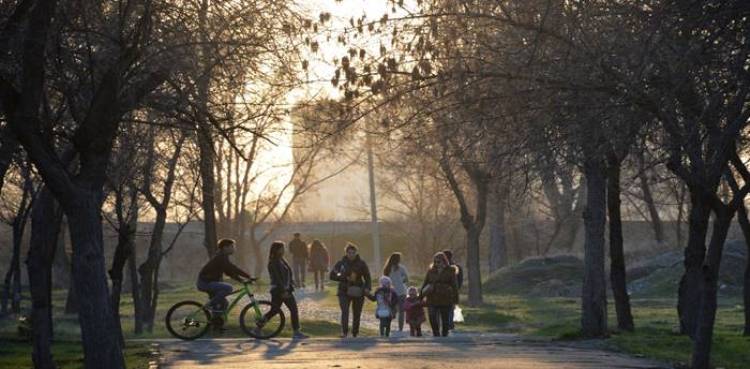Nine Benefits of Urban trees and forests for greener cities
The environmental impacts of urbanization are often intensified by climate change and include increased pollution, decreased availability of food and resources, as well as increased poverty and the frequency of extreme climatic events.

- Country:
- Hungary
For the first time in history, more than 50 per cent of the world’s population now lives in towns and cities. By 2050, this number is expected to increase to 66 per cent. The shift from rural to urban areas, mainly in Africa and Asia, is due to poverty and related socio-economic factors.
For the most part, the rapid expansion of cities takes place without any land use planning strategy and the resulting human pressure has highly damaging effects on forests, landscapes, as well as green areas in and around cities. The environmental impacts of urbanization are often intensified by climate change and include increased pollution, decreased availability of food and resources, as well as increased poverty and the frequency of extreme climatic events.
Urban trees can help to mitigate some of the negative impacts and social consequences of urbanization, and thus make cities more resilient to these changes. Here are nine ways in which urban trees and forests contribute to making cities socio-economically and environmentally more sustainable:
1. Trees can contribute to the increase in local food and nutrition security, providing food such as fruits, nuts and leaves for both human consumption and fodder. Their wood, in turn, can be used for cooking and heating.
2. Trees play an important role in increasing urban biodiversity, providing plants and animals with a favourable habitat, food and protection.
3. A mature tree can absorb up to 150 kg of CO2 per year. As a result, trees play an important role in climate change mitigation. Especially in cities with high levels of pollution, trees can improve air quality, making cities healthier places to live in.
4. Strategic placement of trees in cities can help to cool the air between 2 and 8 degrees Celsius, thus reducing the urban “heat island” effect, and helping urban communities to adapt to the effects of climate change.
5. Large trees are excellent filters for urban pollutants and fine particulates. They absorb pollutant gases (such as carbon monoxide, nitrogen oxides, ozone and sulfur oxides) and filter fine particulates such as dust, dirt or smoke out of the air by trapping them on leaves and bark.
6. Research shows that living in close proximity to urban green spaces and having access to them, can improve physical and mental health, for example by decreasing high blood pressure and stress. This, in turn, contributes to the well-being of urban communities.
7. Mature trees regulate water flow and play a key role in preventing floods and reducing the risk of natural disasters. A mature evergreen tree, for instance, can intercept more than 15 000 litres of water per year.
8. Trees also help to reduce carbon emissions by helping to conserve energy. For example, the correct placement of trees around buildings can reduce the need for air conditioning by 30 per cent, and reduce winter heating bills by 20-50 per cent.
9. Planning urban landscapes with trees can increase property value, by up to 20 per cent, and attract tourism and business.
A city with well-planned and well-managed green infrastructure becomes more resilient, sustainable and equitable in terms of nutrition and food security, poverty alleviation, livelihood improvement, climate change mitigation and adaptation, disaster risk reduction and ecosystems conservation. Throughout their lifetime, trees can thus provide a benefits package worth two to three times more than the investment made in planting and caring for them.
ALSO READ
Health News Roundup: Scientists investigate thousands of dead Antarctic penguins for bird flu; CVS Caremark to cover Perrigo's birth control pill in US at zero cost for plan sponsors and more
Rajasthan model of cashless insurance of up to Rs 25 lakh will be adopted for universal healthcare: Cong manifesto.
Congress will conduct nationwide socio-economic and caste census: Party manifesto.
Health report indicates significant growth in non-communicable diseases across India
Health News Roundup: AstraZeneca's Imfinzi shows promise in treating aggressive lung cancer; US FDA issues warning letters to retailers against underage sale of ZYN nicotine pouches and more










